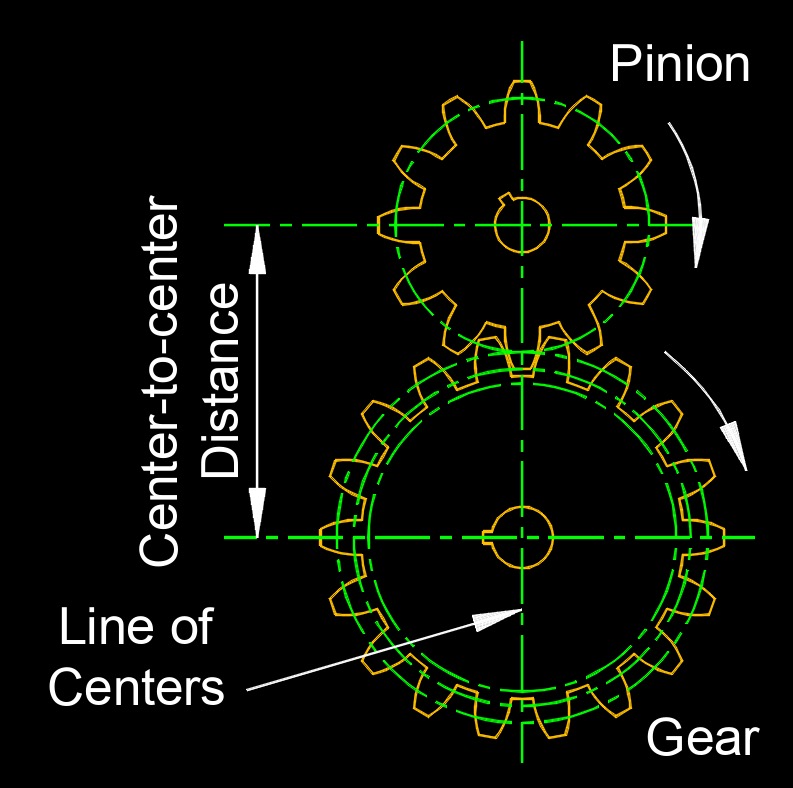Gear Ratio
Gear Ratio formula |
||
|
\( GR \;=\; \dfrac{ n_g }{ n_p }\) (Gear Ratio) \( n_g \;=\; GR \cdot n_p \) \( n_p \;=\; \dfrac{ n_g }{ GR }\) |
||
| Symbol | English | Metric |
| \( GR \) = gear ratio | \(dimensionless\) | \(dimensionless\) |
| \( n_g \) = number of teeth on the gear | \(dimensionless\) | \(dimensionless\) |
| \( n_p \) = number of teeth on the pinion | \(dimensionless\) | \(dimensionless\) |

Gear ratio, abbreviated as \(GR\), is the number of teeth of the larger gear to the smaller gear. The gear ratio for a pair of gears is a measure of the ratio of the rotational speeds of the two gears. It is commonly denoted by "n1:n2," where n1 is the number of teeth on the driving gear (the gear that is connected to the input) and n2 is the number of teeth on the driven gear (the gear that is connected to the output).
The gear ratio affects the relationship between torque and speed in a mechanical system. Gears with a higher gear ratio (1:2) will result in the output gear rotating more slowly but with greater torque, while gears with a lower gear ratio (2:1) will result in the output gear rotating more quickly but with less torque. Gear ratios are used in various mechanical systems, including vehicles, bicycles, and machinery.

